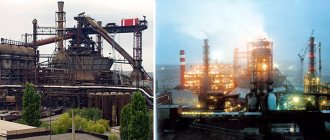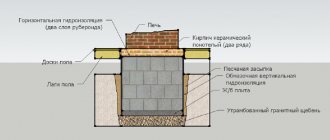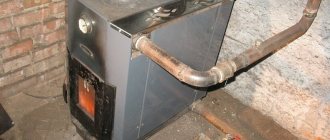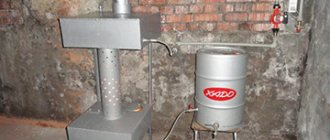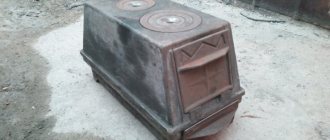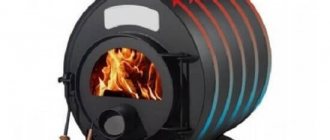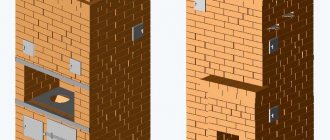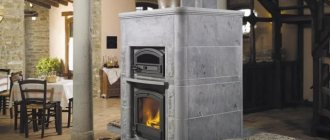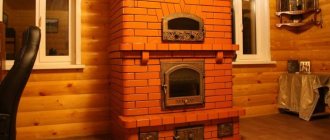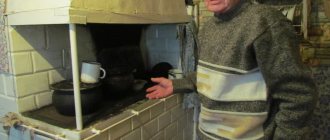In this article I will talk about the most important element of modern production of ferroalloys and cast iron, the blast furnace. It is the main equipment of a blast furnace, so I think everyone is interested in learning about the components of a blast furnace and the principle of operation.
Iron ore is used as a raw material, and the main product of blast furnace production is cast iron, which has found its application in various fields of activity: automobile production, manufacture of sanitary ware, cast iron cookware, etc.
By the way, you can call a tow truck in Almaty around the clock for your car here.
Concept of blast furnace and smelting
Modern civilization is inextricably linked with the development of production technology, which is impossible without improving the tools and materials used for their manufacture.
Among all materials of natural origin or created by man, the most significant place is occupied by ferrous metals - an alloy of iron and carbon with the presence of other elements.
Alloys containing 2–5% carbon are classified as cast iron; those containing less than 2% carbon are classified as steel. For melting metals, a special blast furnace technology is used.
Blast smelting is the process of producing cast iron from iron ore processed in blast furnaces or, as they are also called, blast furnaces.
The main materials needed in the process of such production are:
- fuel in the form of coke obtained from coal;
- iron ore, which is the direct raw material for production;
- flux – special additives made from limestone, sand, and other materials.
A blast furnace is a device for producing cast iron by reducing smelting of iron ores or concentrates.
The main equipment of a blast furnace is a blast furnace - a round shaft furnace lined with refractory masonry.
To protect the furnace casing from heat, refrigeration devices are used. The furnace casing and furnace furnace device are installed on the foundation and supported by columns.
The starting material for smelting is called charge and consists of iron ore, manganese ore, sinter, and pellets. The charge is supplied to the furnace top by skips or a belt conveyor. The skips are unloaded into the furnace through the receiving funnel. Air is supplied through air heaters, the smelting product exits through tapholes into ladles located in the lower part.
Modern blast furnaces are equipped with a centralized control and monitoring system that provides recording of instrument indicators and complex indicators of blast furnace operation - coke consumption per 1 ton of pig iron and daily blast furnace productivity in tons.
Additional fuel is used, which reduces coke consumption and the cost of cast iron. Improving the design of a blast furnace is aimed at increasing its power (volume), improving the preparation of raw materials, and introducing new progressive, high-performance technologies.
Pig iron is smelted in blast furnaces, which are a shaft furnace. The essence of the process of producing cast iron in blast furnaces is the reduction of iron oxides included in the ore with gaseous (CO, H2) and solid (C) reducing agents formed during the combustion of fuel in the furnace.
The blast furnace smelting process is continuous. Source materials (sinter, pellets, coke) are loaded into the furnace from above, and heated air and gaseous, liquid or pulverized fuel are supplied to the lower part.
Gases obtained from fuel combustion pass through the charge column and give it their thermal energy. The descending charge is heated, reduced, and then melted.
Most of the coke is burned in the lower half of the furnace, providing a source of heat, and part of the coke is spent on reducing and carburizing the iron.
A blast furnace is a powerful and highly productive unit that consumes a huge amount of materials. A modern blast furnace consumes about 20,000 tons of charge per day and produces about 12,000 tons of pig iron every day.
Additional furnace elements
The operation of the oven requires the operation of auxiliary devices. Among them:
- air heaters; large tower-type elements are located next to the furnace; blast furnace gas enters them, which then burns; due to this, even hotter gas is formed, heating the air through a complex system; the latter - heated to a temperature of at least 1000 degrees - is used for smelting cast iron;
- blowers; compressed air is necessary for fuel combustion; air enters the furnace thanks to devices that generate a pressure of about 25 MPa;
- devices for lifting and filling the charge;
- gas purifiers for cleaning blast furnace gases;
- other auxiliary devices - for example, overhead cranes with which foundry yards are equipped.
Figure 4. An example of a modern blast furnace
Modern furnaces are equipped with automation systems. Computerization makes it possible to control and regulate the basic parameters associated with the functioning of the blast furnace. The level of raw material filling, gas pressure, blast temperature, etc. are under control.
Modern blast furnaces are left to automation. The computer controls the main production processes
Components of a blast furnace
A blast furnace is a continuously operating unit consisting of the following zones:
- Hot blast.
- Melting zone (shoulders and hearth).
- FeO reduction zone (steam).
- Fe2O3 reduction zone (mine).
- Preheating zone (fire pit).
- Loading iron ore materials, limestone and coke.
- Blast gas.
- Column of iron ore materials, limestone and coke.
- Slag release.
- Production of liquid cast iron.
- Collection of waste gases.
The internal outline of the vertical section of a blast furnace is called the furnace profile.
The working space of the furnace includes:
- fire pit;
- mine;
- steam;
- shoulders;
- horn
- Koloshnik.
The upper (narrow) part of the furnace is called the top. The top has a charging apparatus for loading charge (ore, fuel, fluxes) and gas outlet pipes through which gases called blast furnace or top gases are removed from the blast furnace. The part of the furnace between the top and the steam is called the shaft.
The part of the furnace, facing upward with a truncated cone and supporting the charge in steam along with the charge and the top, is called shoulders. In this part of the furnace, there is a rather sharp reduction in the volume of loaded materials as a result of coke burnout and the formation of liquid smelting products.
- Mine.
The shaft accounts for most of the total height and volume of the furnace. The profile of the shaft, which is a truncated cone expanding towards the bottom, ensures uniform lowering and loosening of the charge materials.
The significant height of the shaft allows for thermal and chemical processing of materials by rising hot gases.
- Rasp.
This is the middle cylindrical part of the furnace working space, having the largest diameter. Steaming creates some additional increase in furnace volume and eliminates possible delays in charge materials.
- Shoulders.
This is a part of the furnace profile located below the steam chamber and is a truncated cone with its wide base facing the steam chamber. The reverse taper of the shoulders corresponds to a decrease in the volume of melted materials during the formation of cast iron and slag.
- Horn.
The lower part of the furnace, which has the shape of a cylinder, in which the smelting products—liquid iron and slag—accumulate, is called the forge. The furnace has holes radially located at equal distances from each other (10-16, depending on the size of the blast furnace).
Double-walled red copper, bronze or aluminum pipes are inserted into these holes. These holes are called tuyeres.
Hot air heated in air heaters (coopers) is blown through the tuyeres by a fan or blowing machines. The tuyeres are cooled by water circulating in the space between the pipe walls.
Additional elements of the blast furnace
During the work process, auxiliary devices and mechanisms are required to ensure high-quality melting of cast iron. Devices for lifting and loading raw materials into the furnace are necessary.
A blast furnace requires constant maintenance, especially when producing slag and cast iron. For this purpose, foundry yards are equipped with overhead cranes.
Heating of air for furnace operation, high melting temperature with less air is provided by air heaters. For example, to a furnace with a useful volume of 2000 m³, such equipment must supply 3800 m³ of air per minute, the temperature of which is 1200 degrees.
The steam generated by air entering the air heater must be constantly moist. The value of this indicator is regulated using an automatic system.
Compressed air, which is necessary for burning fuel, enters the furnace thanks to air blowers. Its pressure at the top of modern furnaces reaches 25 MPa. The blast furnace gas is purified using a gas purifier.
Blast furnace device
A modern furnace is a huge structure weighing up to 35,000 tons and a height of up to 40 m. In order for long-term smelting without downtime to be possible, the furnace must be durable and reliable. The outside of the device is covered with a steel casing - the base is lined with thick sheets (up to 4 cm).
There is a fire-resistant lining on the inside. It needs constant cooling, so metal containers are installed below in which water circulates. Since a lot of liquid is needed, evaporative cooling is sometimes used. The essence of the method is the evaporation of boiling water, which actively absorbs thermal energy. *
Figure 2. Blast furnace design
A furnace is a structure consisting of many elements. The main ones are presented:
- Kolosnik (grid-iron);
- steamed;
- mine;
- mountain;
- shoulders.
Koloshnik
This is the upper element, which serves to load raw materials (charge) and remove exhaust gases. The main part of the top is the filling unit. In most cases, the devices for filling the charge are double-cone. Both cones are covered between the fillings. After the raw material is supplied, the smaller element is lowered and the iron ore falls into the larger one. As soon as the required portion is collected, the small cone closes and the ore from the large one enters the furnace. After this, the large device is also sealed.
More advanced blast furnaces have an improved top design. The role of a large cone is played by a rotating chute with an adjustable angle of inclination. Thanks to this, it is possible to fill the raw materials from any side.
The flue also serves as a gas outlet. The smelting process produces a huge amount of gas. Along with it, iron-containing dust is also removed, which is captured by gas purifiers.
Figure 3. Scheme of blast furnace production
*
Mine
The shaft occupies most of the furnace space. The structure, expanding downward, is a truncated cone. Thanks to this, the charge is fed evenly. The blast furnace is a vertical structure and quite high. This is necessary to ensure chemical and thermal treatment of raw materials with heated gases.
Raspar
The cylinder-shaped element is located in the middle part of the working domain zone. Raspar is characterized by the largest diameter. The purpose of the design is to increase the furnace space and eliminate unnecessary raw materials. This is where waste rock is formed.
Shoulders
A shortened cone-shaped version of the raspar - the truncated component faces the wide part upward. With the help of shoulders, the volume of melted charge in the production of cast iron is reduced.
Horn
The main part in which metal smelting takes place. Here coke burns and gas is formed, slag and cast iron accumulate and liquid metal is regularly released from the structure. The forge consists of a tuyere zone and a metal receiver. Through the tuyeres, through an air heater and a ring air duct, hot air enters the furnace. It is necessary for fuel combustion. The bottom of the metal receiver is called the flange.
At the bottom of the hearth there are slag and cast iron tapholes - holes through which molten metal passes. After the cast iron is released, the hole is closed using a piston mechanism with a fire-resistant mass.
The slag holes are located 1.5-2 m above the cast iron tapholes. They are closed using steel corkscrews with tips. The slag is separated from the cast iron using a unit located on the furnace chute. Both components are fed into special ladles.
This whole gigantic structure has a huge mass. This weight must be transferred evenly to the ground. Therefore, the blast furnace is installed on a massive concrete foundation, the thickness of the base of which can reach 4 m. The base serves as a support for the columns, which, in turn, support the metal structures. The upper foundation part is made of heat-resistant concrete in the format of a monolithic cylinder.
The pressure of a huge mass on the ground is compensated by the construction of a powerful foundation
The table shows the relationship between the sizes of some modern stoves.
| Dimensions, mm | Useful volume of blast furnace, m3 | ||
| 2000 | 3000 | 5000 | |
| Diameter: | |||
| fire pit | 7300 | 8200 | 11200 |
| raspara | 10900 | 12900 | 16300 |
| forge | 9750 | 11700 | 14900 |
| Height: | |||
| mines | 18200 | 20100 | 19500 |
| forge | 3600 | 3900 | 4500 |
| useful | 29200 | 32200 | 32200 |
| full | 32350 | 34650 | 36900 |
*
Purpose of a blast furnace and operating principle
The production of pig iron in the blast furnace is an important branch of the iron and steel industry.
This work requires not only the need to use special equipment, but also careful adherence to certain technologies.
Smelting is carried out in a blast furnace from waste rocks and ore matter.
The ore substance can be red, brown, spar, magnetic iron ore or manganese ores.
Iron reduction is one of the main stages of cast iron production.
As a result of this process, the iron becomes hard. Next, it is dipped into steam, which promotes the dissolution of carbon in the iron. Thus, cast iron is formed. It is in the hot part of the furnace that the cast iron itself begins to melt, slowly flowing down to the lower part.
The operating principle of a blast furnace depends on the type of this bulky device.
There are coke and charcoal ovens.
The former work on coke, the latter, respectively, on charcoal.
The shaft furnace is designed for continuous operation. The shape of this equipment is two cones, folded with wide sides at the base. Between these cones there is a part of the furnace that has a cylindrical shape - steam.
The operating principle of a blast furnace is expressed in several physical and chemical operations. The presence of these operations is determined by the temperature region of the furnace itself and the load of material.
In general, the following processes can be distinguished:
- the process of decomposition of limestone, resulting in the formation of carbonic anhydride and calcium oxide;
- restoration of iron and other elements;
- carburization of iron;
- metal smelting;
- the formation and melting of slag;
- fuel combustion and others.
A blast furnace air heater is a device in which air is preheated. This air is then fed into the furnace.
Early equipment for smelting cast iron did not have such an element as an air heater. The development of the device has made it possible to significantly reduce fuel costs.
The operating principle of a blast furnace is based on complex physical and chemical processes.
The following operations are distinguished:
- fuel combustion;
- iron recovery;
- decomposition of limestone into calcium oxide and carbonic anhydride;
- saturation of iron with carbon;
- metal smelting;
- slag melting, etc.
In the most general sense, blast furnace smelting is the production of pig iron from iron ore raw materials.
The main materials with which cast iron can be smelted are:
- fuel - coke;
- iron ore is the raw material from which cast iron is smelted;
- flux – special additives made from sand, limestone and some other materials.
The charge enters the furnace in the form of small fused pieces - pellets or agglomerates. The ore substance can be manganese ore or various variations of iron ore. The raw materials are poured into the furnace in layers, alternating with layers of flux and coke.
Slag floats to the surface of hot cast iron. Impurities are drained off before the liquid metal hardens.
The supply of raw materials, like the operation of the furnace, must be continuous. The consistency of the process is ensured by special conveyors. Getting into the furnace through the described elements, the charge goes through a number of technological processes.
Burning coke gives the required temperature, which should not fall below 2000 degrees. Combustion promotes the combination of oxygen and coal. At the same time, carbon dioxide is formed. Under the influence of high temperature, the latter becomes carbon monoxide. Thanks to this, iron is restored.
Cast iron becomes cast iron after the iron passes through molten coke. For the result to become possible, the iron must be saturated with carbon. Cast irons include alloys containing 2-5% carbon.
After the finished metal has accumulated in the forge, it is released through tapholes. The slag is first released through the upper hole, and then the cast iron is released through the lower hole. The latter is drained through channels into buckets and sent for subsequent processing.
Blast furnace products
The products of blast furnace smelting are:
- cast iron;
- slag;
- blast furnace (top) gas.
Cast iron
Pig iron is the main product of blast furnace production, and slag and blast furnace gas are by-products.
Cast irons smelted in blast furnaces, depending on the method of further use, are divided into three groups:
- conversion materials used for processing into steel;
- foundries intended for producing cast iron castings in mechanical engineering;
- special (ferroalloys) used for deoxidation of steel in steelmaking.
Cast iron is a multicomponent alloy of iron with carbon, manganese, silicon, phosphorus and sulfur.
Cast iron also contains trace amounts of hydrogen, nitrogen and oxygen. Alloyed cast iron can contain chromium, nickel, vanadium, tungsten and titanium, the amount of which depends on the composition of the ores being smelted.
Pig iron is intended for processing into steel.
This type of cast iron is characterized by the fact that the carbon in it (2.2-4%) is in a chemically bound state.
The fracture surface of cast iron is white.
Depending on the composition and method of processing, there are:
- open hearth cast iron containing phosphorus from 0.15 to 0.30% and sulfur up to 0.07%;
- Bessemer, containing phosphorus 0.07% and sulfur up to 0.069%;
- Tomasovsky, containing phosphorus 1.6% and sulfur up to 0.08%.
Pig iron is divided into three types:
- Conversion coke (grades M1, M2, M3, B1, B2).
- Conversion coke phosphorous (MF1, MF2, MF3).
- High-quality pigment coke (PVK1, PVK2, PVK3).
After leaving the blast furnace, cast iron is poured into pigs and sent cold to machine-building plants, where it is melted again in special cupola furnaces to cast machine parts.
Foundry coke iron is smelted in seven grades: LK1-LK7.
Each grade is divided into three groups based on manganese content, five classes based on phosphorus content and five categories based on sulfur content.
Phosphorous cast irons.
A special group consists of phosphorous cast irons containing up to 2% P; depending on the phosphorus content, various technologies are used for converting such cast irons into steel.
Foundry cast irons.
This type of cast iron is intended for the production of cast products in iron smelting shops. A characteristic feature of these cast irons is their high silicon content (2.75 - 3.75% Si), and in some cases phosphorus. This is explained by the fact that these elements give the molten cast iron high fluid mobility or the ability to fill the casting mold well.
Foundry cast iron is used after remelting in machine-building plants to produce shaped castings.
Foundry cast iron is used for the manufacture of cast products:
- pipes;
- radiators;
- water fittings;
- stanine;
- blocks;
- gears, etc.
Such cast iron has a gray color when fractured. In it, part of the carbon is in a free state, in the form of graphite. Gray cast iron usually contains 1.25-4.25% silicon, 2.5-4% carbon, 0.5-1.3% manganese, 0.1-1.2% phosphorus and a small amount of sulfur.
Manganese gives cast iron its hardness and brittleness.
Silicon, on the contrary, reduces the hardness of cast iron, making castings made from such cast iron easy to machine.
Phosphorus makes cast iron meltable and fills thin sections of molds well.
Castings made of cast iron containing a high amount of phosphorus resist abrasion well, but at the same time have increased fragility.
Sulfur gives cast iron a dense melting point and reduces its mechanical properties.
Special cast irons (ferroalloys).
These are iron alloys with a high content of silicon, manganese and other elements, used as deoxidizers or additives in steelmaking and iron foundries.
These include:
- ferromanganese (70 – 75% Mn and up to 2% Si);
- ferrosilicon (9 – 13% Si and up to 3% Mn);
- mirror cast iron (10 – 15% Mn and up to 2% Si).
In recent years, the smelting of ferroalloys in blast furnaces has decreased due to the uneconomical nature of processing. It is more profitable to smelt ferroalloys in electric furnaces.
Slag
Slag is a by-product; it is a very cheap, high-quality building material and is used to make cement, concrete, bricks, and to prime roads.
The amount of slag obtained during smelting is very large (approximately 60% of the weight of the cast iron being smelted).
Slags are either basic or acidic.
Acidic slag has high strength. If it is blown through in liquid form with steam or air, you get slag wool, which is a good insulator.
